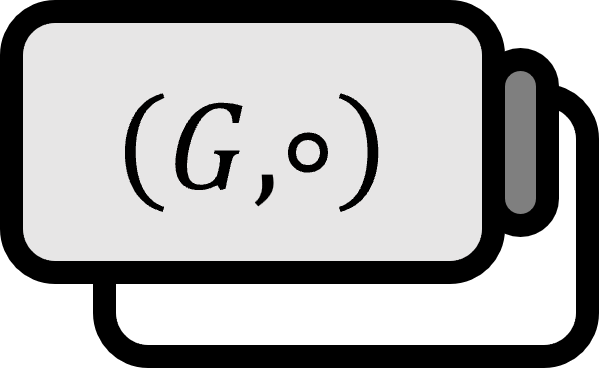If the Unit of a Ring is Idempotent, It Can Be Expressed as a Direct Sum
Theorem
Given a ring $R$ with a unity element $1$, if its zero divisors $a$ satisfy $a^2 = a$, that is, if it’s an idempotent, then $R$ is uniquely represented as the direct product of $aR$ and $(1-a)R$. $$ R = a R \times (1-a)R $$
Explanation
This theorem is charmingly mathematical enough that one can understand it without defining the direct sum of rings separately.
Proof
Part (i). Existence
For $r \in R$ $$ ar \in aR \\ (1-a) r \in (1-a) R $$ and since $r = ar + (1-a)r$, then $R = a R \times (1-a)R$.
Part (ii). Uniqueness
For $r_{1}, r_{2}, r_{3} , r_{4} \in R$, $$ \begin{align*} a r_{1} =& x_{1} \in aR \\ a r_{3} =& x_{2} \in aR \\ (1-a) r_{2} =& y_{1} \in (1-a) R \\ (1-a) r_{4} =& y_{2} \in (1-a) R \end{align*} $$ Assuming $x_{1} = x_{2}$ and $y_{1} = y_{2}$ suffices. $$ \begin{align*} & x_{1} + y_{1} = x_{2} + y_{2} \\ \implies& a r_{1} + (1-a) r_{2} = a r_{3} + (1-a) r_{4} \\ \implies& a^2 r_{1} + a(1-a) r_{2} = a^2 r_{3} + a(1-a) r_{4} \end{align*} $$ Since $a^2 = a$ and $a(1-a) = a - a^2 = a-a = 0$, $$ x_{1} = a r_{1} = a^2 r_{1} = a^2 r_{3} = a r_{3} = x_{2} $$ Similarly, $$ a r_{1} + (1-a) r_{2} = a r_{3} + (1-a) r_{4} $$ and since $a r_{1} = a r_{3}$, $$ (1-a) r_{2} = (1-a) r_{4} $$ Hence, the following is obtained. $$ y_{1} = (1-a) r_{2} = (1-a) r_{4} = y_{2} $$
Part (iii). Exclusivity
Suppose $x \in aR \cap (1-a)R$, for some $r_{1} , r_{2} \in R$ $$ x = a r_{1} = (1-a) r_{2} $$ If both sides are multiplied by $a$, $$ ax = a^2 r_{1} = a(1-a) r_{2} = (a - a^2) r_{2} = 0 \cdot r_{2} = 0 $$ Since $x=a r_{1} = a^2 r_{1} = 0$, the following is obtained. $$ aR \cap (1-a)R = \left\{ 0 \right\} $$
■
